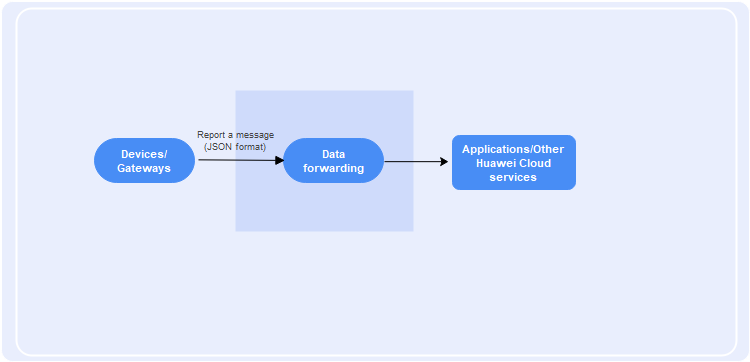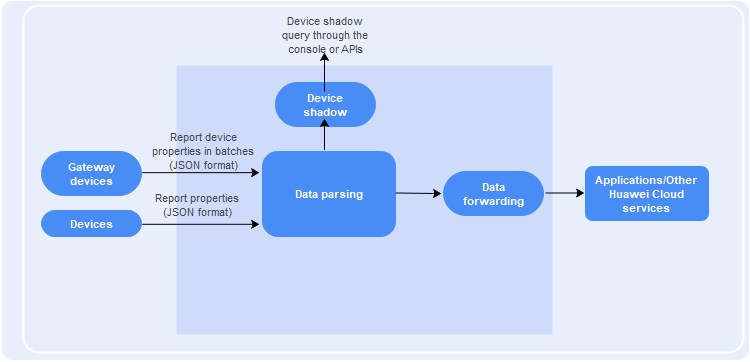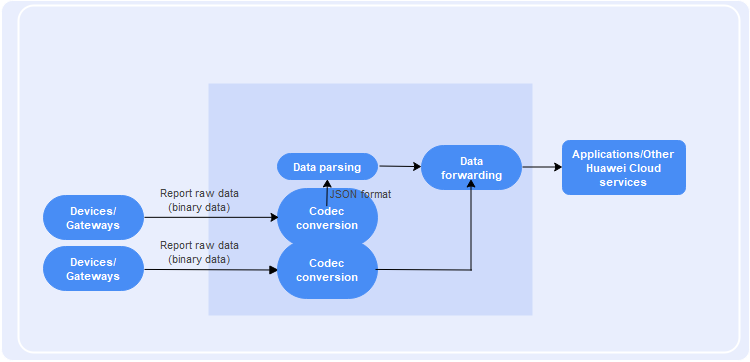Overview
Introduction
A device connected to IoTDA can send data to IoTDA in multiple ways.
|
Type |
Sub-type |
Description |
Scenario |
Protocol |
Product Model |
Size |
|---|---|---|---|---|---|---|
|
Message reporting |
Devices directly report data to the cloud. The platform does not parse or store the reported data, and transparently transfers it from devices to applications. |
Used for high-frequency data transmission or in scenarios where user-defined data formats are required. For example, a large amount of sensor data needs to be sent to applications in a short period of time. |
MQTT and HTTP |
Not required |
|
|
|
Devices report data with custom topics. The platform transparently transfers the reported data. Applications can subscribe to custom topics to differentiate services. |
Used when devices need to report messages for various service types, or transfer data to specific topics in scenarios such as data migration. |
MQTT |
||||
|
Property reporting |
The platform does not transparently transfer the reported data from devices to applications. Instead, the platform verifies and filters data based on the defined product model. If the reported data does not comply with the product model definition, the platform discards the data. |
Used when the platform needs to parse and store device data with unified models that specify the data format and value range. Alternatively, used when the platform needs to store the latest image data. For example, the switch data of street lamps needs to be sent to the application side. |
MQTT, HTTP, and LwM2M over CoAP |
Required |
|
|
|
Gateways report the properties of multiple child devices at a time. The platform does not transparently transfer the reported data from devices to applications. The reported data is distributed to the corresponding child devices by the platform. |
Used when a gateway is associated with multiple child devices, and you do not have strict requirements on the data reporting time. The data of these child devices can be packaged and then reported together by the gateway. |
MQTT |

- It is not suitable to report data in JSON format for devices with limited resources or with limits on bandwidth usage. In this case, devices can transparently transfer the original binary data to the platform, but a codec is required to convert binary data to JSON format. For details about how to develop codecs, see Developing a Codec.
- You can forward the reported data to other Huawei Cloud services for storage and processing with data forwarding rules. Then, the data is further processed through the consoles or APIs of the other services.



APIs for Applications
Feedback
Was this page helpful?
Provide feedbackThank you very much for your feedback. We will continue working to improve the documentation.See the reply and handling status in My Cloud VOC.
For any further questions, feel free to contact us through the chatbot.
Chatbot





